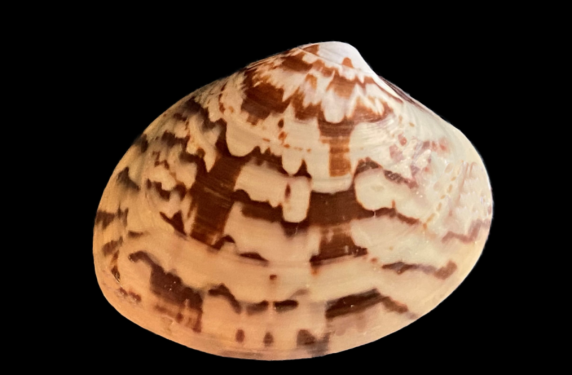
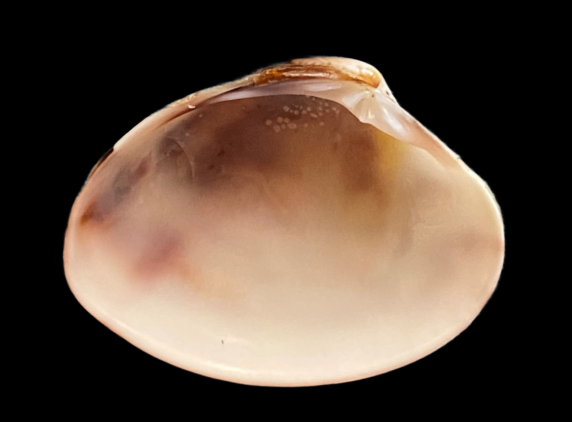
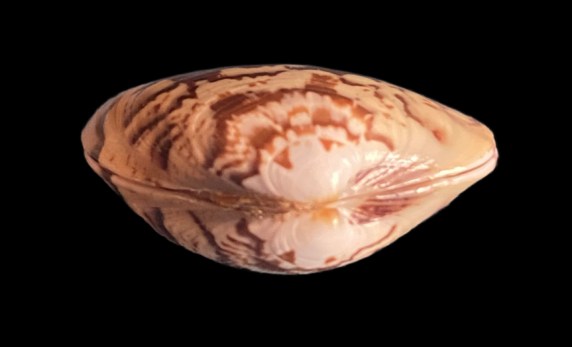 Mexican Chocolate Clam Shell, Megapitaria squalida, Juvenile. Shell collected off the beach at Punta Chivato, Baja California Sur, January 2023. Size: 2.5 cm (1.0 inches) x 1.8 cm (0.7 inches). Collection and, photographs courtesy of Colin Campbell, DVM, Punta Chivato, Baja California Sur. Identification courtesy of Dr. Paul Valentich-Scott, Santa Barbara, California.
Mexican Chocolate Clam Shell, Megapitaria squalida, Juvenile. Shell collected off the beach at Punta Chivato, Baja California Sur, January 2023. Size: 2.5 cm (1.0 inches) x 1.8 cm (0.7 inches). Collection and, photographs courtesy of Colin Campbell, DVM, Punta Chivato, Baja California Sur. Identification courtesy of Dr. Paul Valentich-Scott, Santa Barbara, California.
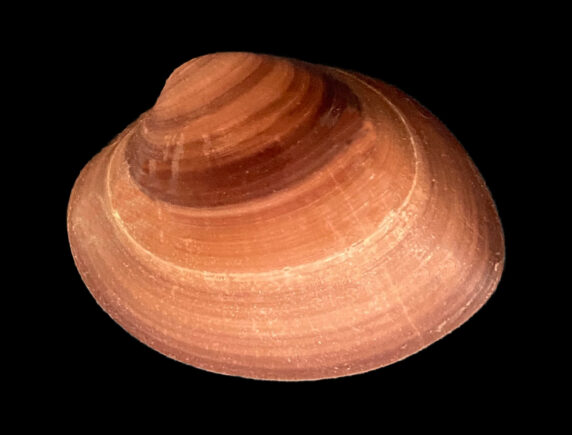
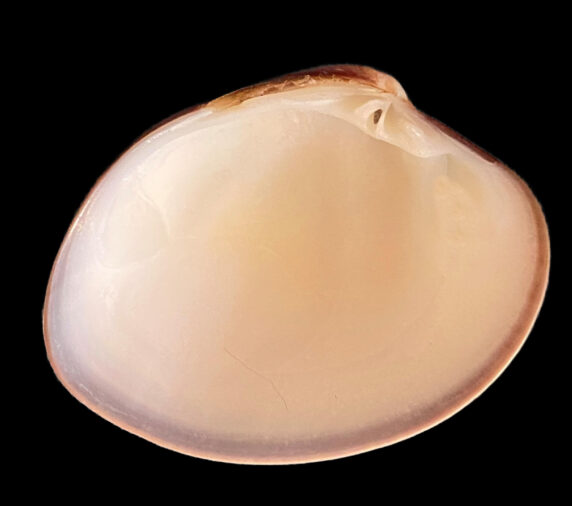 Mexican Chocolate Clam Shell, Megapitaria squalida. Shell collected off the beach at Punta Chivato, Baja California Sur, January 2023. Size: 3.7 cm (1.5 inches) x 2.7 cm (1.1 inches) x 1.8 cm (0.7 inches). Collection, photographs and identifications courtesy of Colin Campbell, DVM, Punta Chivato, Baja California Sur.
Mexican Chocolate Clam Shell, Megapitaria squalida. Shell collected off the beach at Punta Chivato, Baja California Sur, January 2023. Size: 3.7 cm (1.5 inches) x 2.7 cm (1.1 inches) x 1.8 cm (0.7 inches). Collection, photographs and identifications courtesy of Colin Campbell, DVM, Punta Chivato, Baja California Sur.
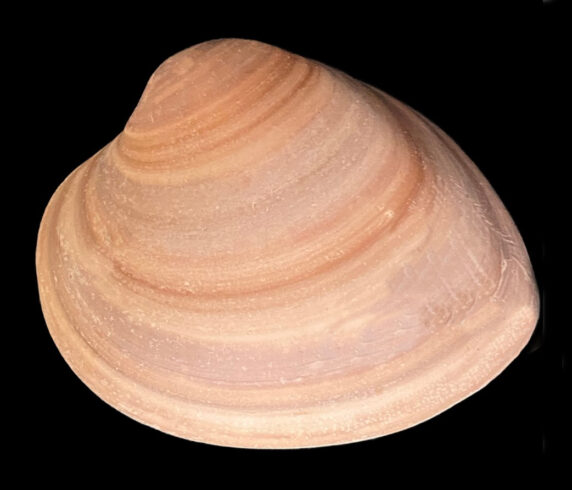
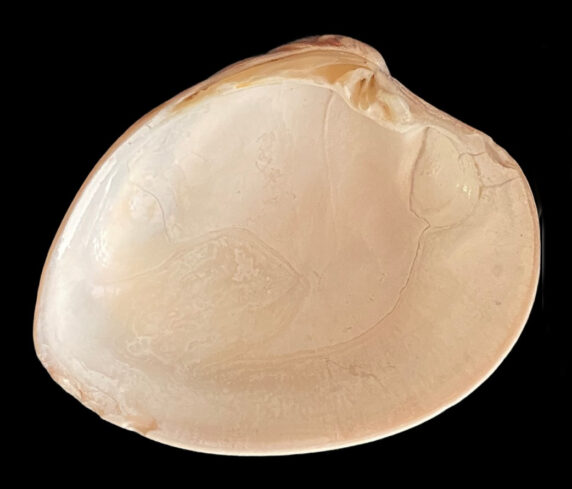 Mexican Chocolate Clam Shell, Megapitaria squalida. Shell collected off the beach at Punta Chivato, Baja California Sur, January 2023. Size: 6.6 cm (2.6 inches) x 6.7 cm (2.6 inches) x 3.4 cm (1.3 inches). Collection, photographs and identifications courtesy of Colin Campbell, DVM, Punta Chivato, Baja California Sur.
Mexican Chocolate Clam Shell, Megapitaria squalida. Shell collected off the beach at Punta Chivato, Baja California Sur, January 2023. Size: 6.6 cm (2.6 inches) x 6.7 cm (2.6 inches) x 3.4 cm (1.3 inches). Collection, photographs and identifications courtesy of Colin Campbell, DVM, Punta Chivato, Baja California Sur.
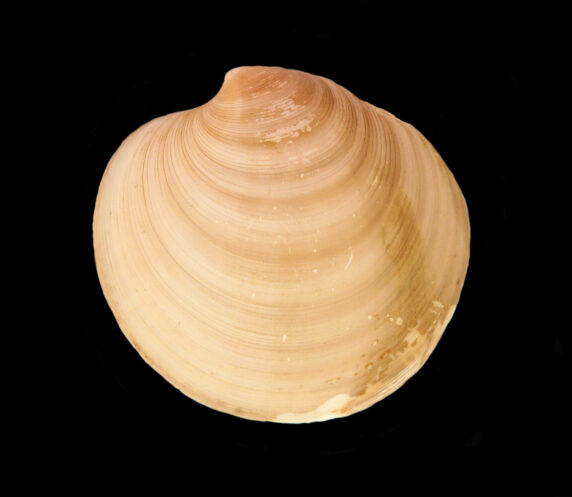
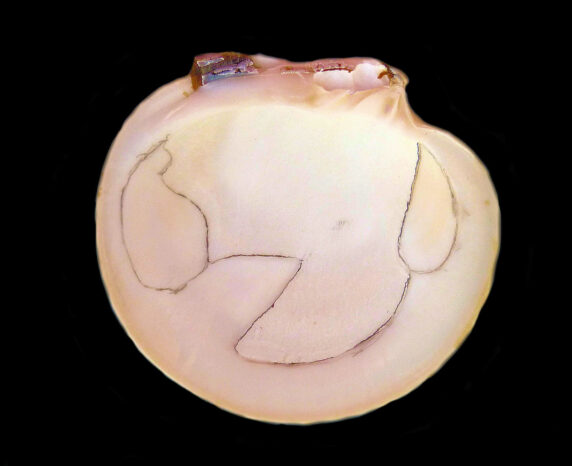
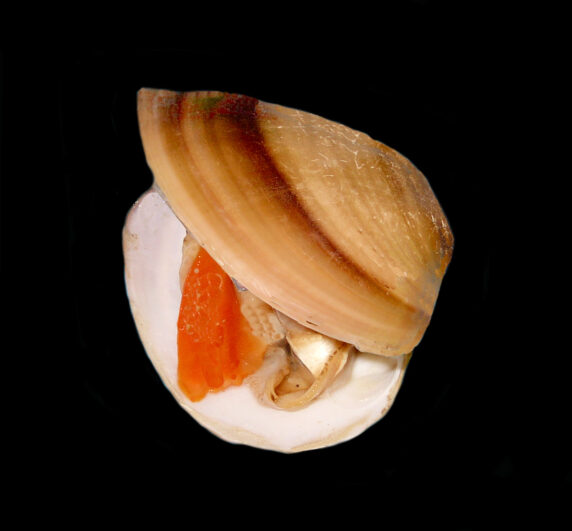
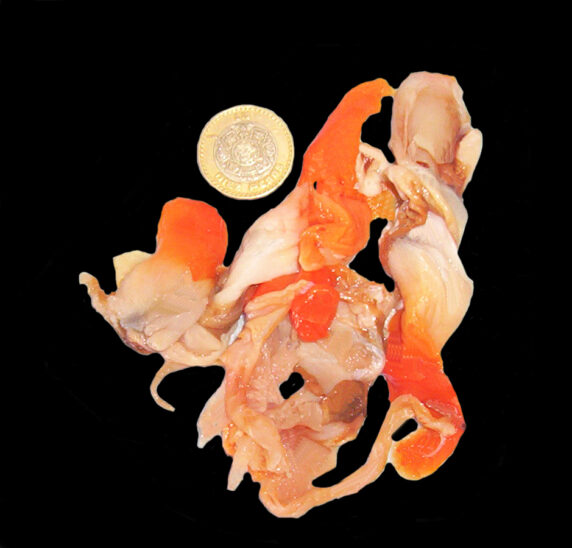 Mexican Chocolate Clam Shell, Megapitaria squalida. Shell collected from within the estuary of the Magdalena Bay complex, Baja California Sur, October 2018. Size: 10.5 cm (4.1 inches) x 8.2 cm (3.2 inches).
Mexican Chocolate Clam Shell, Megapitaria squalida. Shell collected from within the estuary of the Magdalena Bay complex, Baja California Sur, October 2018. Size: 10.5 cm (4.1 inches) x 8.2 cm (3.2 inches).
The Mexican Chocolate Clam, Megapitaria squalida (G.B. Sowerby I, 1835), is a bivalve mollush of the Veneridae Family of Venus Clams. They are also known as the Chocolate Clam and in Mexico as almeja chocolate or just chocolate and almega negra. The shell is thick and equivalve (both valves equal in size and shape) shell that has an ovate profile. The margin and anterior end of the shell are round; the posterior end slopes to a weak point. The external surface is smooth. The exterior of the shell is brown with radiating darker brown bands, from which it derives its name, and the interior is white, and may be marked with radiating purple bands. Mexican Chocolate Clams reach 13 cm (5.1 inches) in length and 10 cm (4.0 inches) in height.
Mexican Chocolate Clams are found buried in mud and sand substrate at depths up to 200 m (650 feet). They move to deeper waters as they mature. They range from Guerrero Negro, Baja California to Peru and are found in the Sea of Cortez from Bahía de los Ángeles, Baja California to the Cabo San Lucas, Baja California Sur. They are an important food source for humans and sold commercially throughout Mexico. They are also used as a cut bait for sportsfishing but on a limited basis as results are normally marginal.
Synonyms include Callista squalida, Cytherea biradiata, Cytherea chionea, Cytherea squalida, Macrocallista orcutti, Macrocallisa squalida, and Venus guttata.